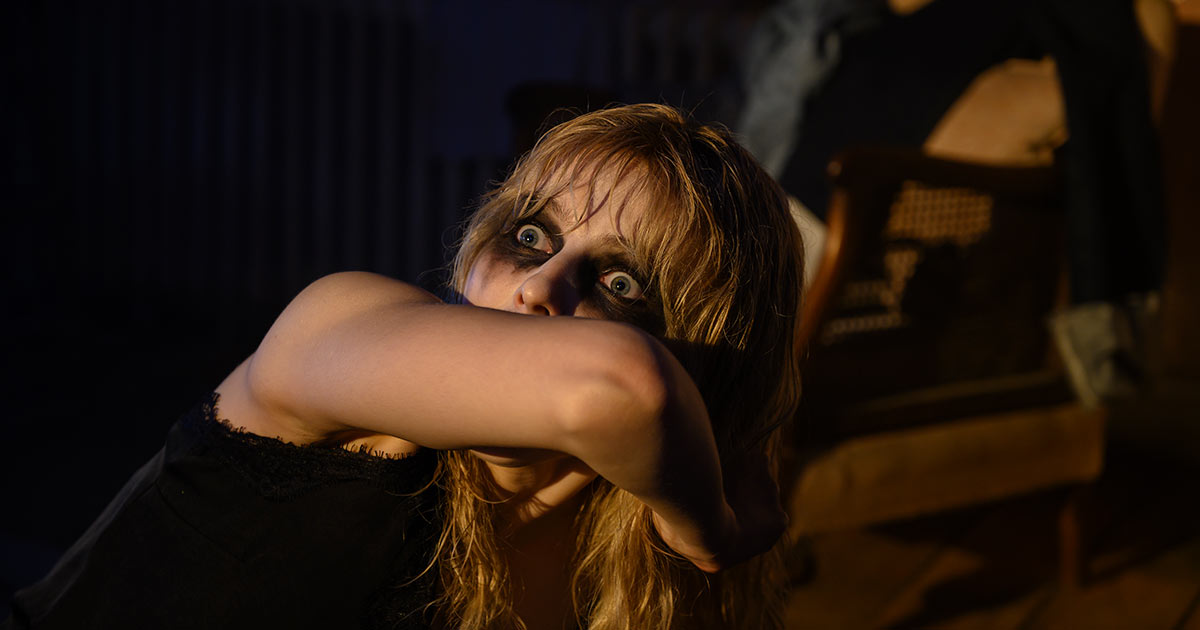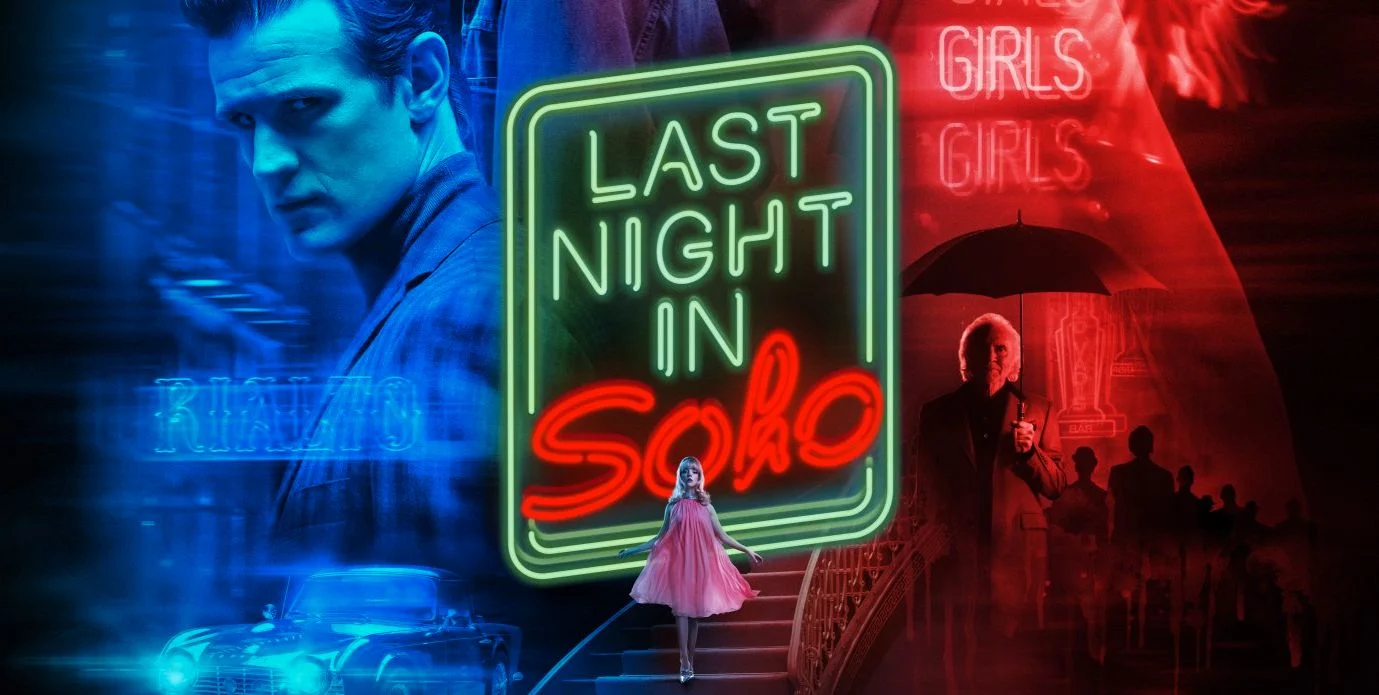*TW This film depicts graphic violence against women and scenes including rape.
A twist on an era that historically centers around female empowerment, Edgar Wright’s latest film, Last Night in Soho is striking in so many ways- many of which I didn’t expect. The elusive trailer leaves a lot to ponder in terms of plot- and co-writers Wright and Krysty Wilson-Cairns ensure that the only way to truly know what you’re getting yourself into with this film is to buy a ticket.

Last Night in Soho takes place in modern-day London where an aspiring fashion designer, Eloise (Thomasin McKenzie) is overcome by her medium-esque gift which allows her to peer through time by way of dreaming of her favourite era: the swinging sixties. Her apparitions let her follow a vision of the past-Sandie (Anya Taylor-Joy) as her confidence helps her glide effortlessly through a spectacular fling with Jack (Matt Smith) as well as a showbusiness career- which inspires Ellie to do the same in her own life. Modeling her day-to-day after a supernatural fantasy leads her into a waking nightmare as Sandie’s story reveals itself to become more sinister.
We’ve always known that Edgar Wright is a mixologist when it comes to blending sound, light, colour, and texture. This is especially true in the first act of the film. In fact, all of my positive feedback is directed exclusively at the first act of this film. So allow me to breakdown all of the beautifully wasted setups that were accomplished:
So many layers are established for each player in this 1960’s fever dream, including the Dreamweaver herself, Ellie, who floats along as a passenger, watching a vivid new life explode in front of her. Anya Taylor-Joy has amazing chemistry with herself. As she is intended to be, her introductory scene is hypnotic and her pairing with Matt Smith is elegant, exciting, and smooth. Even Ellie’s unintentional interactions with Jack and Sandie are well-choreographed and captivating. The spectacular visuals add to the cocktail of exciting imagery. As an audience member, my brain was swimming in euphoria. Major points can also be awarded to the love interest, John (Michael Ajao) for depicting a pretty solid support system for Ellie throughout the film.

The opening chapter leaves so much to be desired… and it all quickly falls apart from there.
As Wright attempts to descend the whimsey of this film into a dark commentary, it begins to unravel, becoming completely tonally inconsistent. One of the outstanding major disappointments for me was all of that aforementioned layer-building amongst the key characters being completely cast to the wayside. That foundation, as well as the cast’s acting chops are entirely unnurtured. (I was begging for Anya Taylor-Joy to say anything other than “You know where to find me.”)
The root of the problem, in my expert opinion, is the continued reliance on dizzying sequences to invoke emotion in lieu of actual story development. It may be a personal preference that I lean towards more dialogue-driven narratives but I found the constant chasing and running montages to be chaotic and distracting, all the while failing to build any dramatic tension or raise the stakes. While the film is a respectable runtime of just under two hours, it doesn’t feel like much actually gets accomplished in reference to the driving goal of the story.

A sensation that I absolutely cannot ignore is the palpable notion that Wright is trying desperately to piece together- and sputter out- a film that revolves around the daily lived experience of a woman. So, so much of that reality gets lost in translation. There are moments (in the first act!) of this film that get it absolutely right- a scene where a new-to-London Ellie is made uncomfortable by a persistently inappropriate taxi driver, for example. But as the dramatics of the film are amped up this genuine connection to the female leads becomes blurred. The most prominent example I can cite is the zombie-like depiction of the men that have assaulted Sandie that now terrorize and haunt Ellie in her waking hours. This cliche monster imagery oversimplifies the fear it attempts to emulate- and highlights an overwhelming gut feeling of disconnect.
While co-writer Wilson-Cairns prides herself on the twist ending, it truly did feel like a headspin: an emotionally confusing, fast-paced game of finger-pointing as to who the real villain of the story is. All this to say, I was very surprised to do my research and learn that this script was co-written by a woman. Sitting in the theatre with my brow furrowed, I felt an absence of the feminine perspective when in fact, one was present all along.


Comments